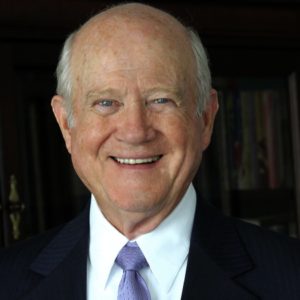
For those organizations that are successful, if they don’t understand how positive reinforcement works, they will come to find they are a detriment to their own success, and will be slow to change, simply because they are successful.
Be warned: If your organization does change but takes forever to do so, it is still very much at risk. “Rate” of change is the key to future survival. Therefore, what CEOs have to do is lead change when the organization least needs it. It is a true test of leadership. But what happens when these key triggers are not directly in front of you? How do you stay ahead of change? To stay ahead, the CEO should be mindful of the following:
1. Learn the science of behavior. For more than 100 years, the science of behavior has taught us that you get what you reinforce. Understanding and applying its tools and principles throughout your organization will give you a competitive advantage unmatched by any technology or product innovation. For example, an insurance provider completed a top-down overhaul of its company strategy using behavioral methods for strategy execution. Short-term results included a 1,500% rise in net production, and the long-term result is 20+ years of sustained improvement and meeting or exceeding corporate goals.
2. Ensure your infrastructure is innovation-friendly. Make it easy to obtain funds, space and time to work on innovative ideas. Have little paperwork except that related to results of experimental efforts. 3M is an exemplar in this. They just received their 100,000th patent and generate about 3,000 per year. They make innovation easy.
3. Encourage and seek out creative and innovative ideas from all levels. You never know where the next best idea will come from, so you need to ensure that your organization welcomes and reinforces all ideas. Be careful not to build in roadblocks to idea-sharing. Employees should have the ability to present ideas to executive levels, and executives should know enough about behavior to encourage employees to share ideas for making the organization better.
Fuji Electric, at one time, averaged 127 ideas per employee per year. During that same period, U.S. employee suggestions averaged .2 of a suggestion per employee per year. It is difficult for most U.S. managers to believe such numbers. One reason for Fuji’s success was that its managers took the simplest and smallest idea seriously because they knew that when an employee was reinforced for a small idea, he or she was likely to have another possibly larger and more significant idea. With U.S. engagement numbers in the 20%-30% percent range, it’s obvious that we aren’t capturing the creative capacity of all employees.
4. Spend more time listening and less time telling. An engaged workforce will always work harder to be successful than one that is disengaged. Listening and acting on what you hear is one of the keys to building a culture of engagement from the top down. It can only happen when all levels are involved. It starts with the CEO.
In the face of rapid change, the company that is fastest to change is likely to be the winner. By creating an organization where CEOs are doing the items above, you will have an engaged workforce and a culture that stands ready for any change.
Aubrey Daniels, Ph.D., is the founder of workplace consulting firm Aubrey Daniels International and president of the Aubrey Daniels Institute. Dr. Daniels, who coined the term “performance management,” is the author of Performance Management: Changing Behavior That Drives Organizational Effectiveness, Bringing Out the Best in People: How to Apply the Astonishing Power of Positive Reinforcement, Measure of a Leader, and Oops! 13 Management Practices that Waste Time and Money (and what to do instead). He is a keynote speaker and regularly blogs for Talent Management magazine.

0

1:00 - 5:00 pm
Over 70% of Executives Surveyed Agree: Many Strategic Planning Efforts Lack Systematic Approach Tips for Enhancing Your Strategic Planning Process
Executives expressed frustration with their current strategic planning process. Issues include:
Steve Rutan and Denise Harrison have put together an afternoon workshop that will provide the tools you need to address these concerns. They have worked with hundreds of executives to develop a systematic approach that will enable your team to make better decisions during strategic planning. Steve and Denise will walk you through exercises for prioritizing your lists and steps that will reset and reinvigorate your process. This will be a hands-on workshop that will enable you to think about your business as you use the tools that are being presented. If you are ready for a Strategic Planning tune-up, select this workshop in your registration form. The additional fee of $695 will be added to your total.

2:00 - 5:00 pm
Female leaders face the same issues all leaders do, but they often face additional challenges too. In this peer session, we will facilitate a discussion of best practices and how to overcome common barriers to help women leaders be more effective within and outside their organizations.
Limited space available.

10:30 - 5:00 pm
General’s Retreat at Hermitage Golf Course
Sponsored by UBS
General’s Retreat, built in 1986 with architect Gary Roger Baird, has been voted the “Best Golf Course in Nashville” and is a “must play” when visiting the Nashville, Tennessee area. With the beautiful setting along the Cumberland River, golfers of all capabilities will thoroughly enjoy the golf, scenery and hospitality.
The golf outing fee includes transportation to and from the hotel, greens/cart fees, use of practice facilities, and boxed lunch. The bus will leave the hotel at 10:30 am for a noon shotgun start and return to the hotel after the cocktail reception following the completion of the round.